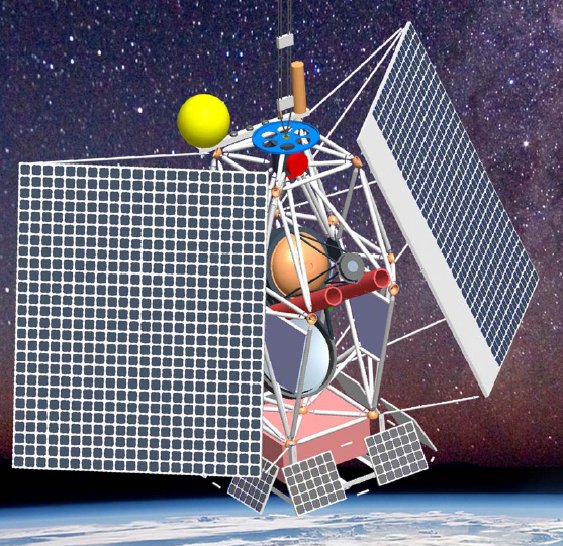NASA has recently selected five Explorer Mission Program of Opportunity proposals for a Phase A-Concept Study. GUSSTO, which stands for Galactic/Xgalactic Ultra long duration balloon Spectroscopic Stratospheric THz Observatory, is one of two astrophysics missions selected. Of these two missions NASA plans to choose one for flight. This is exciting news for SRON and the Kavli Institute of Nanoscience of the TU Delft, who will provide the key detector technology for GUSSTO’s 4.7 THz camera.
The GUSSTO mission, led by Prof. Christopher Walker of the University of Arizona at Tucson (USA), will launch a high-altitude balloon with a one-meter telescope. The aim is to provide a comprehensive understanding of the inner workings of our galaxy and one of our companion galaxies, the Large Magellanic Cloud (LMC), by tracing all phases of the interstellar medium. In that respect GUSSTO is complementary to the European Herschel space telescope (ESA), launched in 2009, and the Japanese SPICA telescope (JAXA) which will be launched in about 10 years from now and will carry the SRON led SAFARI instrument.

Antarctic
The balloon will be launched from Williams Field, the Antarctic. During its ~100 day flight it will spiral out from the Antarctic circling the Earth. As it drifts northward more and more of the Milky Way will become visible, allowing a large scale survey to be performed. At its flight altitude of ~36 km there is only a trace amount of water vapor , the primary source of absorption at THz frequencies. Therefore the observing conditions are nearly the same as in space. The NASA kick-off meeting for GUSSTO was on Oct. 18th. It is going to take 11 months to conduct the mission concept study. If all goes well, the first GUSSTO flight may take place in December 2017.
Dutch scientists will contribute to the science (i.e., astrophysics and data analysis) of GUSSTO. Prof. Alexander Tielens at Leiden University and dr. Frank Helmich at SRON are members of the science team. dr. Jian-Rong Gao at SRON and TU Delft is a key member of the team developing the 4.7 THz camera.
Heterodyne cameras
GUSSTO will be equipped with three 16-pixel heterodyne cameras operating at 4.7, 1.9 and 1.4 THz respectively, will simultaneous provide astronomical observations of neutral oxygen (OI), singly ionized carbon (CII) and singly-ionized nitrogen (NII) lines during ~100 days of operation (1 THz equals 300 micrometers in wavelength). GUSSTO will map the structure, dynamics, energy balance, pressure, and evolution of the interstellar medium within the Milky Way and LMC with the spectral and spatial resolution needed to untangle the complexities of the interstellar medium. “The ability to carry out the first large-scale surveys with velocity-resolved imaging of these spectral lines is going to be a landmark in astrophysics,” says GUSSTO project scientist Paul Goldsmith from the Jet Propulsion Laboratory in Pasadena, California.
SRON and the Kavli Institute of Nanoscience of Delft University of Technology (TU Delft) will provide the key detector technology for the 4.7 THz camera for GUSSTO, which is based on a so-called superconducting hot electron bolometer (HEB) mixer, making use of nanotechnology and operating at very low temperatures. SRON and TU Delft will team with the Massachusetts Institute of Technology to provide quantum cascade laser local oscillator technology, which helps the detector to measure the signal intensity with highly resolved frequency information. The detection technique is actually similar to what is used in SRONs molecule hunter HIFI, but the difference is that HIFI works only up to 1.9 THz
Super-THz technology
The hot electron bolometer mixer is the only sensitive coherent detector working at such a high frequency. SRON-TU Delft is a world leader in Super-THz technology and has produced very high sensitivity mixers at ~4.7 THz., with noise performance just a bit more than four times the quantum noise limit.
The work at SRON has been financially supported by different funding agencies such as ESA, EU FP7, NWO, and KNAW. The last two are supporting a joint research activity between The Netherlands (SRON-TUDelft) and China (Purple Mountain Observatory) and play a crucial role for the most recent development.


